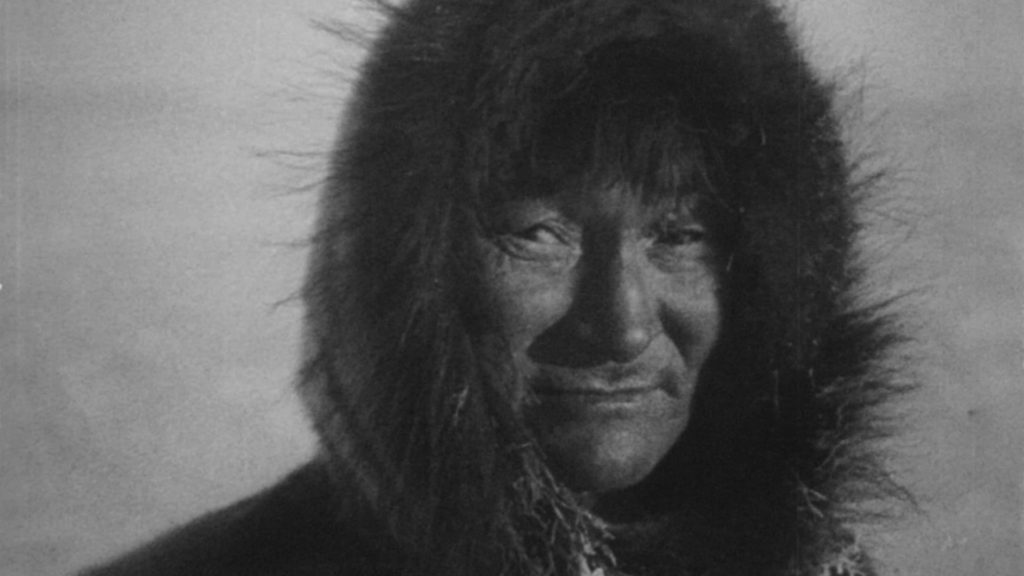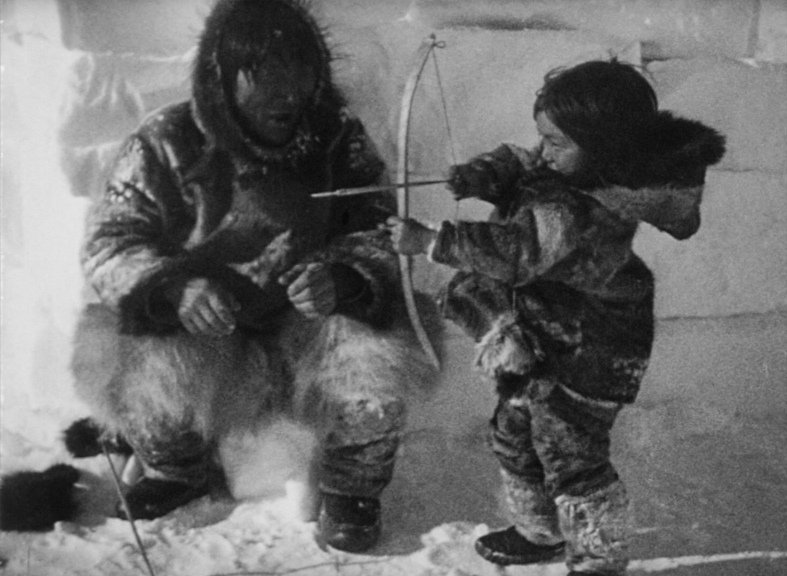Nanook of the North is often hailed as the first documentary — though both the “first” and “documentary” parts of that are up for debate. Unquestionably, though, Nanook of the North is a watershed moment of cinema, setting some standards for documentary that persist to today (and setting plenty of others that would be considered horribly unethical today, but more on that in a bit). Unlike plenty of historic firsts of early cinema, Nanook remains a compelling watch a century later.
The story of the making of Nanook of the North is nearly as famous as the film itself: Robert J. Flaherty filmed a bunch of footage in the frigid Canadian cold, only to accidentally burn all of his negatives with a cigarette butt. His editing print survived, but he disliked the footage enough to return north and film for another year, this time focusing on a specific Inuit family.
(Incidentally, I learned while watching why the story is so well known and so frequently cited: The film opens with intertitles explaining its creation story.)

The resultant film is imminently watchable for a number of reasons. First and foremost, the footage is incredible. You can feel the bitter cold popping off the screen, with some thrilling moments of true danger. The numerous hunting sequences are tense and kinetic, and even the lower-key segments like building an igloo are fascinating. All of the episodes flow quickly, never leaving room for boredom.
Better yet, there’s tremendous humanity in the film. Nanook, as he’s called (Allakariallak was his real name), and his companions form a family full of personality. Even in 80 busy minutes, the film makes space for us to get to know the characters and their idiosyncratic personalities and personal tics.
All in all, it’s worth watching as a pleasant historical artifact, but there are some reasons to come in with some healthy skepticism — perhaps even retrospective revulsion if you value documentarian and cultural integrity.

First, the film is heavily staged and misleading. Nanook’s family isn’t really his family, they are just other actors from the same tribe. Many of the claims in the intertitles are exaggerated or fabricated. Flaherty directly coached Allakariallak to avoid using some guns and other technology he normally would have in order to appear more untamed. There are some thorough write-ups of the inconsistencies if you’re curious (here’s one take).
Secondly, and a bit more understandably, the film is framed from a very imperialist perspective that frequently borders on, and occasionally crosses into, outright racism. The film celebrates the “savage” and makes fun of his disconnection with the modern society we know. It’s not an aggressively hostile form of racism, like The Birth of a Nation, just passively belittling. It lends plenty of humanity Nanook and his family, though there’s one exasperating sequence that’s played for yuks where Nanook struggles to barter with a sophisticated white servant. Overall, though, Flaherty conveys respect towards the film’s subjects and captures them with dignity most of the time.

Ultimately, these don’t change how good the final footage is, but I admit that it cheapens the film a little bit. It’s one thing to depict a foreign culture as alien and wild and primitive for narrative effect. It’s a storytelling tradition as old as time. Lost in Translation did it, and I love that movie. Modern war films are still dependent on it, and probably always will be. It doesn’t mean it’s good or empathetic to otherize people from different cultures, but it’s a lot easier to compartmentalize something when it’s “for the sake of a story” and a lens into fictional characters and themes and conflicts. The problem with Nanook is that Flaherty is peddling his lies and distortions as real facts here. It dehumanizes Allakariallak in order to increase his fascination to the audience — only a couple layers removed from a Barnum-esque freak show.
Overall, Nanook is an influential film that manages to be thoroughly enjoyable, too. Even with its historical warts, it feels like a coup that the film that essentially invented and certainly popularized the “documentary” genre is still such an enduring delight today.
(I’m attempting to watch 1001 Films to See Before Your Die in chronological order. This is film number 14. Up next is seminal horror film Nosferatu.)
Is It Good?
Good (5/8)
Follow Dan on Letterboxd or Twitter. Join the Discord for updates and discussion.

